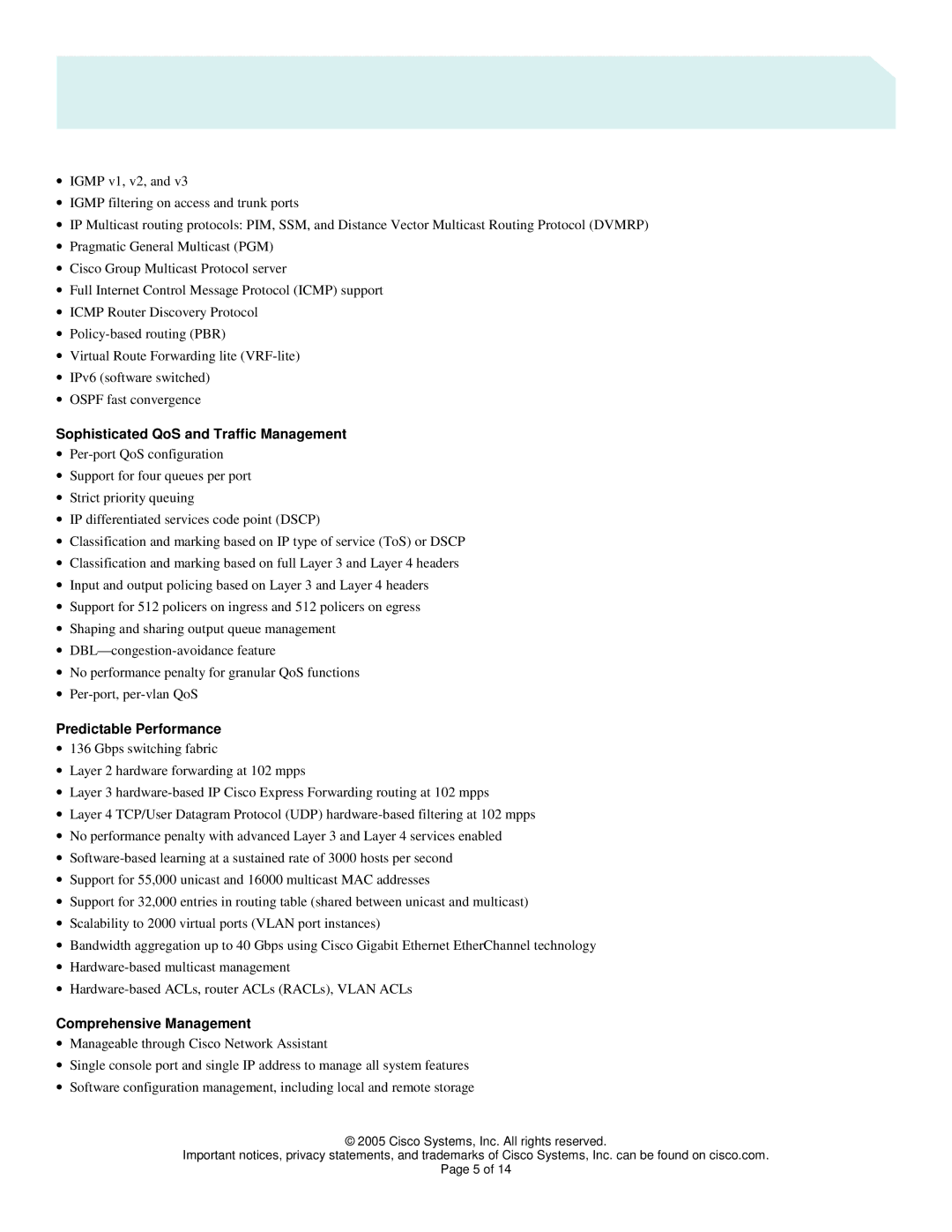
∙IGMP v1, v2, and v3
∙IGMP filtering on access and trunk ports
∙IP Multicast routing protocols: PIM, SSM, and Distance Vector Multicast Routing Protocol (DVMRP)
∙Pragmatic General Multicast (PGM)
∙Cisco Group Multicast Protocol server
∙Full Internet Control Message Protocol (ICMP) support
∙ICMP Router Discovery Protocol
∙
∙Virtual Route Forwarding lite
∙IPv6 (software switched)
∙OSPF fast convergence
Sophisticated QoS and Traffic Management
∙
∙Support for four queues per port
∙Strict priority queuing
∙IP differentiated services code point (DSCP)
∙Classification and marking based on IP type of service (ToS) or DSCP
∙Classification and marking based on full Layer 3 and Layer 4 headers
∙Input and output policing based on Layer 3 and Layer 4 headers
∙Support for 512 policers on ingress and 512 policers on egress
∙Shaping and sharing output queue management
∙
∙No performance penalty for granular QoS functions
∙
Predictable Performance
∙136 Gbps switching fabric
∙Layer 2 hardware forwarding at 102 mpps
∙Layer 3
∙Layer 4 TCP/User Datagram Protocol (UDP)
∙No performance penalty with advanced Layer 3 and Layer 4 services enabled
∙
∙Support for 55,000 unicast and 16000 multicast MAC addresses
∙Support for 32,000 entries in routing table (shared between unicast and multicast)
∙Scalability to 2000 virtual ports (VLAN port instances)
∙Bandwidth aggregation up to 40 Gbps using Cisco Gigabit Ethernet EtherChannel technology
∙
∙
Comprehensive Management
∙Manageable through Cisco Network Assistant
∙Single console port and single IP address to manage all system features
∙Software configuration management, including local and remote storage
© 2005 Cisco Systems, Inc. All rights reserved.
Important notices, privacy statements, and trademarks of Cisco Systems, Inc. can be found on cisco.com.
Page 5 of 14
